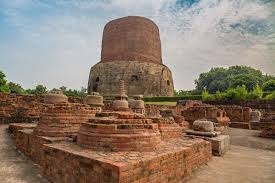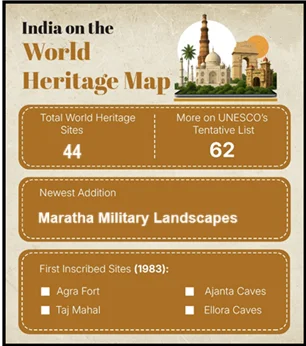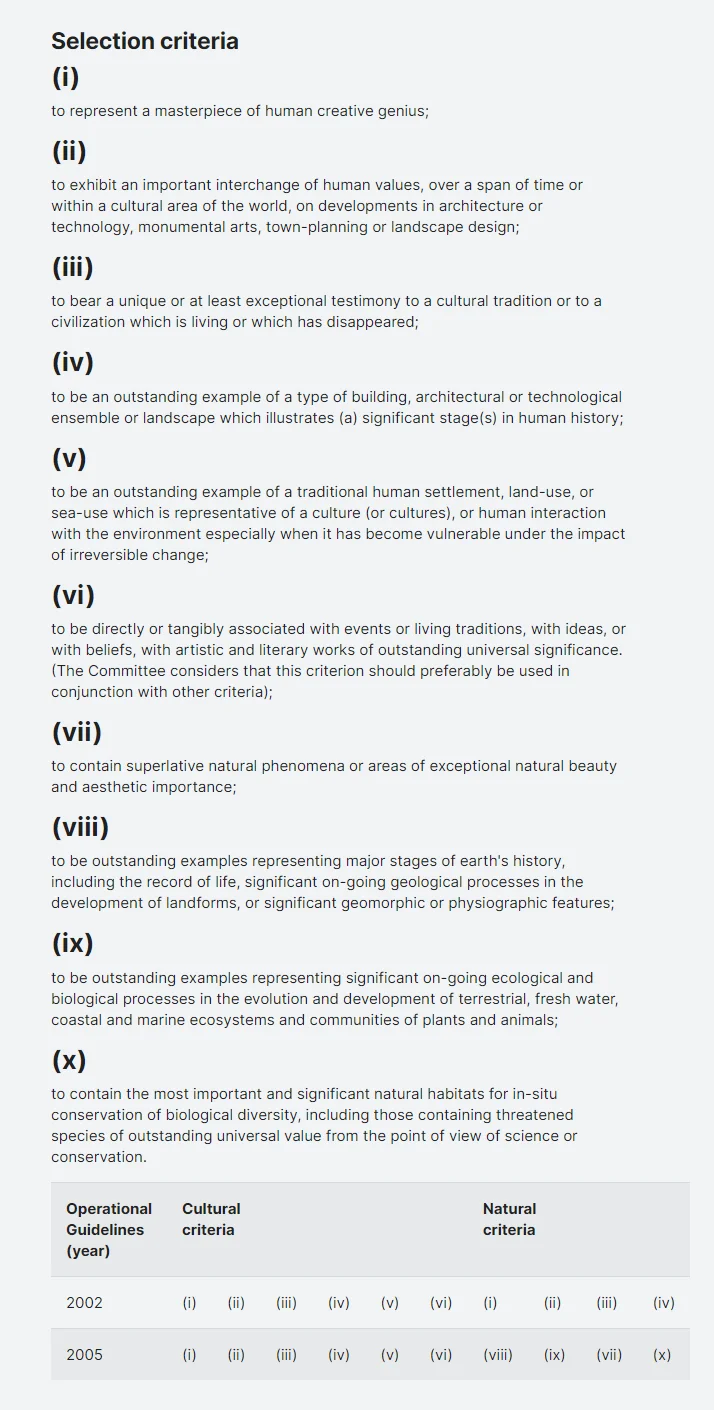Important Facts For Prelims
Sarnath Nominated for UNESCO World Heritage
- 07 Aug 2025
- 7 min read
Why in News?
India has officially nominated the 'Ancient Buddhist Site, Sarnath for the UNESCO World Heritage List under the 2025–26 nomination cycle.
- Sarnath has been on UNESCO's “tentative list” since 1998.
What are the Key Facts Related to Sarnath?
- Location: Sarnath, located near Varanasi, Uttar Pradesh, is a major Buddhist pilgrimage site where Gautama Buddha delivered his first sermon (Dhammachakkappavattana) after enlightenment.
- Historical and Religious Significance: It is also known by names such as Rishipatana, Mrigadava, and Mrigadaya. The modern name is believed to be derived from Saranganatha ("Lord of the Deer").
- Sarnath is one of the 4 key pilgrimage sites in Buddhism, along with Lumbini, Bodh Gaya, and Kushinagar, associated with the birth, enlightenment, first sermon, and death of Buddha respectively.
- Ashes of the Buddha were enshrined in stupas at these locations to commemorate significant events in his life.
- Architecture: Sarnath reflects the architectural evolution from the Mauryan to the Kushan, Gupta, and Gahadavala periods. The site is divided into 2 main monument groups:
- Group A:
- Chaukhandi Stupa: Built around the 5th century AD to honor Lord Buddha, it is a tall brick structure with an octagonal tower on top. This tower was added later, in 1588 by Govardhan, the son of Raja Todarmal to remember Humayun’s visit to Sarnath.
- Group B:
- Dhamek Stupa: Built around 500 CE, believed to mark the exact spot of Buddha’s first sermon.
- Dharmarajika Stupa: Originally built by Mauryan Emperor Ashoka in the 3rd century BCE to house the relics of Buddha.
- Ashokan Pillar: Bearing Ashoka’s edict and originally crowned by the Lion Capital, now India’s National Emblem.
- Ancient monasteries, temples, and numerous votive stupas, spanning from the 3rd century BCE to the 12th century CE.
- Group A:
- Restoration and Invasions: Emperor Ashoka promoted Buddhism after the Kalinga War and built stupas and monasteries at Sarnath.
- Sarnath flourished under rulers like the Kushans, Guptas, and Harshavardhana, who restored structures post Huna invasions.
- The Guptas added artistic features to the Dhamek Stupa, notably stone-carved floral designs.
- The site suffered destruction during the 11th-century raid by Mahmud of Ghazni but was restored by Mahipala of the Pala dynasty.
- The last major monument, Dharmachakra Jina Vihara, was built in the 11th century by Kumaradevi, wife of Govindachandra of the Gahadavala dynasty.
- Excavations and Museums: The first scientific excavation at Sarnath was conducted by Sir Alexander Cunningham, the first DG of the Archaeological Survey of India (ASI), between 1834–36.
- The Ashokan Lion Capital and pillar base were excavated in 1904–05 by Friedrich Oscar Oertel. It was later adopted as State Emblem of India on 26th January 1950,
- The Sarnath Archaeological Museum houses the original Lion Capital, along with other important artefacts.
- The Mulagandha Kuti Vihar, built by the Mahabodhi Society, contains vibrant frescoes narrating Buddha’s life.
What are UNESCO World Heritage Sites?
- About: UNESCO World Heritage Sites are locations of exceptional cultural or natural significance, officially designated under the World Heritage Convention, 1972 for their value to all humanity.
- India ratified the Convention in 1977, joining 195 other countries in this global commitment.
- World Heritage Convention, 1972: Under the Convention, each State Party can nominate only one site per year for inscription on the World Heritage List.
- India currently ranks 6th globally and 2nd in the Asia-Pacific in terms of the number of UNESCO World Heritage Sites, and has 62 sites on its Tentative List.
- Nodal Agency: The ASI is the nodal agency for all World Heritage matters in India.
What are the Criteria to Designate a UNESCO World Heritage Site?
- Site Selection Criteria: To be designated a UNESCO World Heritage Site, a property must demonstrate Outstanding Universal Value (OUV) and meet at least one of 10 criteria, as outlined in the Operational Guidelines of the World Heritage Convention.
- Originally grouped as 6 cultural and 4 natural criteria, they were merged into a single list of 10 in 2005.
- These are periodically updated to reflect global heritage priorities.
- Nomination & Evaluation Process: A site must first be included in the country’s Tentative List.
- The State Party submits a detailed nomination dossier, which is reviewed by the World Heritage Centre.
- The dossier is then evaluated by Advisory Bodies such as:
- ICOMOS (International Council on Monuments and Sites) (for cultural sites),
- IUCN (International Union for Conservation of Nature) (for natural sites) and
- ICCROM, which provides technical expertise and training in conservation.
- Final Decision: The World Heritage Committee, which meets annually, makes the final decision. It can inscribe, defer, or request more information.
- India is a current member (2021–25) of this Committee, contributing to global heritage governance.
UPSC Civil Services Examination, Previous Year Questions (PYQs)
Prelims:
Q. Consider the following properties included in the World Heritage List released by UNESCO: ( 2024)
- Shantiniketan
- Rani-ki-Vav
- Sacred Ensembles of the Hoysalas
- Mahabodhi Temple Complex at Bodhgaya
How many of the above properties were included in 2023?
(a) Only one
(b) Only two
(c) Only three
(d) All four
Ans: (b)
Mains:
Q. Safeguarding the Indian Art Heritage is the need of the moment. Discuss. (2018)
Q.Indian Philosophy and tradition played a significant role in conceiving and shaping the monuments and their art in India. Discuss. (2020)









